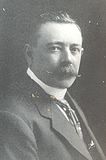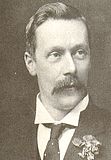1917 Victorian state election
 From Wikipedia - Reading time: 6 min
From Wikipedia - Reading time: 6 min
| |||||||||||||||||||||||||||||||||||||||||||||
All 65 seats in the Victorian Legislative Assembly 33 seats needed for a majority | |||||||||||||||||||||||||||||||||||||||||||||
|---|---|---|---|---|---|---|---|---|---|---|---|---|---|---|---|---|---|---|---|---|---|---|---|---|---|---|---|---|---|---|---|---|---|---|---|---|---|---|---|---|---|---|---|---|---|
| |||||||||||||||||||||||||||||||||||||||||||||
| |||||||||||||||||||||||||||||||||||||||||||||
The 1917 Victorian state election was held in the Australian state of Victoria on Thursday 15 November 1917 for the state's Legislative Assembly. 51 of the 65 Legislative Assembly seats were contested.[1]
Background
[edit]By 1917, World War I was placing an enormous strain on the Victorian economy. While the Liberal party had won the 1914 election with a large majority, many in the party were becoming increasingly dissatisfied with the government's actions on difficulties in the rural areas. The Victorian Farmers' Union emerged as a party, was gathering support and ran candidates for the first time.
The Labor Party had undergone a split in 1916 over the Conscription debate and some of its pro-conscription members led by Prime Minister Billy Hughes left the party and joined with the Liberals to form the Nationalist Party. At the state level, however, some of these members ran as National Labor candidates.
The breaking point for the Nationalist government was Premier Alexander Peacock's decision to increase rail fares to rural areas. The party split into a pro-Peacock Ministerialist faction (mostly composed of city-based members), and an opposition faction led by John Bowser, composed mostly of country members. The two factions ran candidates against each other in most Nationalist seats. This did not effectively split the vote, as Victoria had introduced compulsory preferential voting for this election, and most of the preferences resulting from multiple Nationalist candidates were kept within the party. After the election, on 29 November, the rural faction of the Nationalist government led by Bowser won control of the party, ousting Peacock.
Results
[edit]Fourteen seats were uncontested at this election, and were retained by the incumbent parties:
- Nationalist (7): Ballarat West, Castlemaine and Maldon, Gippsland West, Gunbower, Hawthorn, Lowan, Wangaratta
- Labor (6): Abbotsford, Carlton, Collingwood, Fitzroy, Melbourne, Richmond
- National Labor (1): Gippsland North
| Party | Votes | % | Swing | Seats | Change | ||
|---|---|---|---|---|---|---|---|
| Nationalist | 172,837 | 49.95 | +49.95 | 30 | |||
| Labor | 111,637 | 32.29 | –7.29 | 24 | |||
| Ministerialist | 24,199 | 7.03 | –49.86 | 9 | |||
| Victorian Farmers | 21,183 | 6.13 | +6.13 | 4 | |||
| National Labor | 7,747 | 2.24 | +2.24 | 4 | |||
| Independent Labor | 3,100 | 0.90 | +0.90 | 0 | |||
| Temperance | 2,097 | 0.61 | +0.61 | 0 | |||
| Progressive Farmers | 1,972 | 0.57 | +0.57 | 0 | |||
| Independent Nationalist | 908 | 0.26 | +0.26 | 0 | |||
| Progressive Labor | 74 | 0.02 | +0.02 | 0 | |||
| Formal votes | 343,657 | 96.85 | |||||
| Informal votes | 11,245 | 3.15 | +0.88 | ||||
| Total | 354,902 | 100.00 | 65 | ||||
| Registered voters / turnout | 658,488 | 54.21 | +0.29 | ||||
Aftermath
[edit]As the Bowser faction had won the most seats within the Nationalist party factions, Alexander Peacock resigned as Premier and John Bowser took his place. The previous government's increase on rail fares was reversed, but the issue of how the railways were to be financed remained unresolved. The opposition parties defeated a railway estimates bill in March 1918, and Bowser resigned as Premier in response, having little taste for the office. Bowser then eventually left the Nationalist party for the Victorian Farmers' Union. Peacock supporter Harry Lawson became Premier, after which the factions reunited and formed majority government with 40 of the 65 seats.
See also
[edit]- Members of the Victorian Legislative Assembly, 1917–1920
- Candidates of the 1917 Victorian state election
References
[edit]- ^ Colin A Hughes, A Handbook of Australian Government and Politics 1890-1964, Canberra: Australian National University Press, 1968 (ISBN 0708102700).
- ^ "THE TWENTY-FIFTH PARLIAMENT ELECTED 15 NOVEMBER 1917". Psephos: Adam Carr's Electoral Archive.
 KSF
KSF

